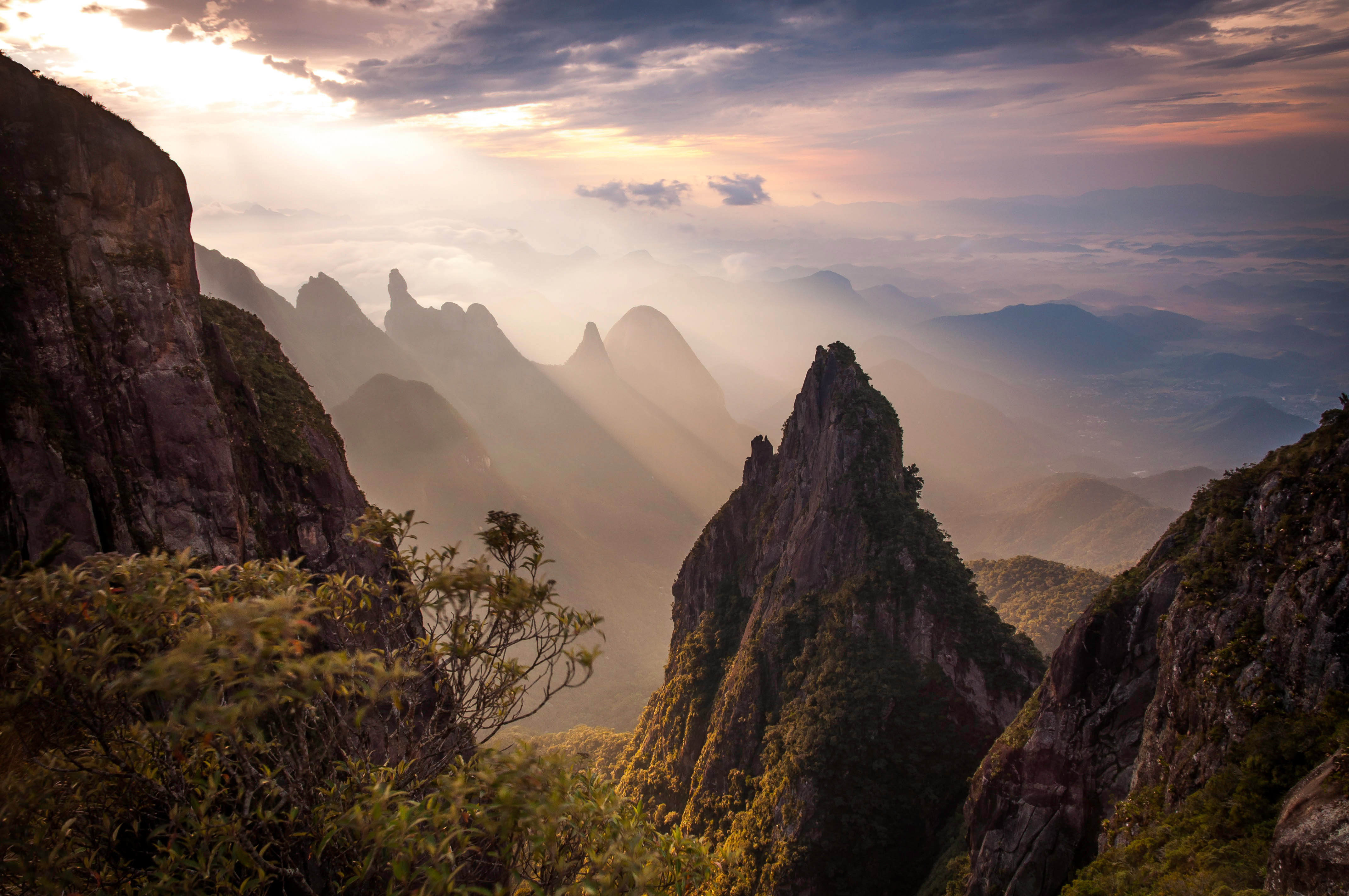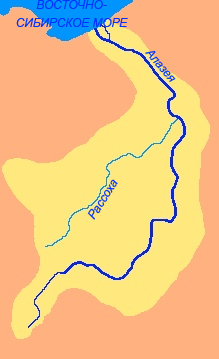|
Kigilyakh
Kigilyakh or kisiliyakh (; , plural ''kihilēxlere'') are pillar-like natural rock formations looking like tall monoliths standing more or less isolated. Usually they are composed of granite or sandstone shaped as a result of cryogenic weathering. Most kigilyakhs formed during the Early Cretaceous and are about 120 million years old. Cultural significance and etymology These anthropomorphic rock pillars are an important feature in Yakut culture. Often they are slightly scattered, protruding from the surface of smooth mountains and giving the impression of a standing crowd of people. According to Yakut legends kigilyakhs originated in very ancient people. The Yakut word ''"kisiliy"'' means "a place where there are people". ''Kisilyakh'' means "mountain having a man" or "mountain married". The term "kigilyakh" is a distorted form of the original Yakut ''"kisilyakh"''. Locations Such stones are found in different places of Sakha (Yakutia), Russia, mainly in the East Siberian L ... [...More Info...] [...Related Items...] OR: [Wikipedia] [Google] [Baidu] |
Rock Formation
A rock formation is an isolated, scenic, or spectacular surface rock (geology), rock outcrop. Rock formations are usually the result of weathering and erosion sculpting the existing rock. The term ''rock Geological formation, formation'' can also refer to specific sedimentary stratum, strata or other rock unit in stratigraphy, stratigraphic and petrology, petrologic studies. A rock structure can be created in any rock type or combination: * Igneous rocks are created when molten rock cools and solidifies, with or without crystallisation. They may be either plutonic bodies or volcanic extrusive. Again, erosive forces sculpt their current forms. * Metamorphic rocks are created by rocks that have been transformed into another kind of rock, usually by some combination of heat, pressure, and chemical alteration. * Sedimentary rocks are created by a variety of processes but usually involving deposition, grain by grain, layer by layer, in water or, in the case of terrestrial se ... [...More Info...] [...Related Items...] OR: [Wikipedia] [Google] [Baidu] |
Kisilyakh Range
The Kisilyakh Range (; ) is a mountain range in the Sakha Republic, Far Eastern Federal District, Russia. The nearest city is Batagay, and the nearest airport Batagay Airport. The mountains are topped by kigilyakh rock formations. Some of the finest kigilyakhs in Yakutia are located in this range, the tallest among them reaching a height of . ''Kisilyakh'' means "Mountain having a man" or "Mountain married" in the Yakut language. Geography The Kisilyakh Range rises at the northeastern end of the Chersky Range, in the Sakha region. The mountains are of middle height and the range is one of the smallest of the system. It stretches in a roughly WNW/ESE direction for about . The highest peak is high. The range consists of two ridges divided into an eastern and western part by a cleft. The Khadaranya and the Ymiysky ranges, other northern subranges of the Chersky Mountains, rise further to the east, beyond the Nenneli, a tributary of the Oldzho river. The Kurundya Range rises ... [...More Info...] [...Related Items...] OR: [Wikipedia] [Google] [Baidu] |
Alazeya Plateau
The Alazeya Plateau () is a mountain plateau in the Sakha Republic, Far Eastern Federal District, Russia. The area is named after river Alazeya, which has its source in the plateau. There are kigilyakhs in the Alazeya Plateau. The particularity of the kigilyakhs found in this location is that their lower part (corresponding to the legs) is thinner than the upper part. Geography The Alazeya Plateau is located in eastern Sakha Republic, between the Indigirka, Kolyma, Alazeya and Ozhogina rivers. The average height of the plateau surface is around . There are slightly higher tableland type elevations cutting across the plateau area; the highest point is a high unnamed summit. The plateau is limited by the Yana-Indigirka Lowland, including the Aby Lowland, to the west, with rivers Yana and Indigirka, the Ozhogina to the south, and the Kolyma Lowland with the Kolyma to the east and northeast.Google Earth Besides the Alazeya, the Sededema and the Shangina also have their sou ... [...More Info...] [...Related Items...] OR: [Wikipedia] [Google] [Baidu] |
Kisilyakh-Tas
Kisilyakh-Tas () is a mountain in Yakutia, Far Eastern Federal District, Russia. Administratively it belongs to the Lower Kolyma District. This mountain is one of the renowned places of Yakutia where kigilyakhs are found. The largest of them are between and in height. Kigilyakhs are rock formations that are held in high esteem by Yakuts. ''Kisilyakh'' means "Mountain having a man" or "Mountain married" in the Yakut language. Geography Mount Kisilyakh-Tas is a small, isolated mountain massif of the Kolyma Lowland, located east of the Suor Uyata range. It rises above the tundra on the right bank of the Alazeya, roughly south of the river's mouth in the shores of the East Siberian Sea. Kisilyakh-Tas is located in a flat area, where there are only two other mountains nearby, a higher one to the SW and a smaller one to the west, both on the other side of the river. The three mountains are roughly at the same distance from each other. Andryushkino, the only inhabited place nea ... [...More Info...] [...Related Items...] OR: [Wikipedia] [Google] [Baidu] |
Alazeya River
The Alazeya (; ) is a river in the northeastern part of Sakha Republic, Yakutia, Russia which flows into the Arctic between the basins of the larger Indigirka to the west and the Kolyma River, Kolyma to the east. Mount Kisilyakh-Tas is a notable kigilyakh site on the right bank of the Alazeya River at . Geography The river is long. The area of its Drainage basin, basin is . The Alazeya is formed at the confluence of the Nelkan and Kadylchan rivers in the slopes of the Alazeya Plateau. It crosses roughly northwards through the tundra meandering among the flat, marshy areas of the Kolyma Lowland, part of the greater East Siberian Lowland. Finally the Alazeya drains into the Kolyma Bay of the East Siberian Sea, close to Logashkino. The river freezes in late September through early October and stays icebound until late May through early June. There are more than 24,000 lakes in its basin.Google Earth [...More Info...] [...Related Items...] OR: [Wikipedia] [Google] [Baidu] |
Kigilyakh Peninsula
Kigilyakh Peninsula () is a peninsula in the New Siberian Islands, Sakha Republic, Russia. History This geographic feature was named after the Kigilyakh stone pillars. In Soviet times on the Kigilyakh Peninsula, Vladimir Voronin, then in charge of the Polar station on the island, was shown a large standing rock that had been heavily eroded and which gave name to the peninsula. Geography The Kigilyakh Peninsula is located in Bolshoy Lyakhovsky Island on the Laptev Sea. The peninsula is conspicuous from the air, projecting southwestwards from the western end with its isthmus in the east. Notable landmarks include Cape Vagin in the northwest and Cape Kigilyakh on the southwestern shore, both marking the westernmost points of Bolshoy Lyakhovsky. Additional geographic features of the peninsula include the Malakatyn River and the Gora Malakatyn-Chokur hill. There is a scientific research base near Cape Kigilyakh. See also *Kigilyakh Kigilyakh or kisiliyakh (; , plural ''kihil ... [...More Info...] [...Related Items...] OR: [Wikipedia] [Google] [Baidu] |
Kyun-Tas
Kyun-Tas (; ) is a mountain range in the Sakha Republic, Far Eastern Federal District, Russia. The Kyun-Tas is one of the mountain areas of Yakutia where there are kigilyakh rock formations. Geography The Kyun-Tas is located northeast of Deputatsky, between the Selennyakh Range and the western end of the Polousny Range. It rises at the southern limit of the Yana-Indigirka Lowland, northwest of the Aby Lowland. It is a broad massif with mountains of middle height and smooth slopes. The main ridge stretches in a roughly southeast/northwest direction west of the eastern slopes of the Selennyakh Range for about .Google Earth Although the range is smaller, the highest summits of the Kyun-Tas are higher than those of the neighboring Polousny Range. The highest peak, located in the northern part, is high; there is another high peak at the southeastern end that is . Hydrography The long Nuchcha, a tributary of the Chondon, originates in the range. Also the long Baky, one of th ... [...More Info...] [...Related Items...] OR: [Wikipedia] [Google] [Baidu] |
East Siberian Lowland
The East Siberian Lowland (), also known as Yana-Kolyma Lowland (),Oleg Leonidovič Kryžanovskij, ''A Checklist of the Ground-beetles of Russia and Adjacent Lands.'' p. 16 is a vast plain in North-eastern Siberia, Russia.Yana-Indigirka and Kolyma lowlands (physical map, scale 1: 2 500 000) // National Atlas of Russia . - M .: Roskartografiya, 2004. - T. 1. - S. 260—261. - 496 p. - The territory of the lowland is one of the Great Russian Regions. Administratively, it is a part of the (Yakutia). Owing to the harshness ... [...More Info...] [...Related Items...] OR: [Wikipedia] [Google] [Baidu] |
Chersky Range
The Chersky Range (, ) is a chain of mountains in northeastern Siberia between the Yana River, Yana and Indigirka River, Indigirka Rivers. Administratively, the area of the range belongs to the Sakha Republic, although a small section in the east is within Magadan Oblast. The highest peak in the range is the -tall Peak Pobeda (Chersky Range), Peak Pobeda, part of the Ulakhan-Chistay Range. The range also includes important places of traditional Yakut culture, such as Ynnakh Mountain ''(Mat'-Gora)'' and kigilyakh rock formations. The Moma Natural Park is a protected area located in the southern zone of the range. History At some time between 1633 and 1642, Poznik Ivanov ascended a tributary of the lower Lena (river), Lena, crossed the Verkhoyansk Range to the upper Yana, and then crossed the Chersky Range to the Indigirka. The range was sighted in 1926 by Sergei Obruchev (Vladimir Obruchev's son) and named by the Russian Geographical Society after the Polish explorer and geogra ... [...More Info...] [...Related Items...] OR: [Wikipedia] [Google] [Baidu] |
Polousny Range
The Polousny Range (; ) is a mountain range in the Sakha Republic, Far Eastern Federal District, Russia.Полоусный кряж (Polousny Range) / Great Soviet Encyclopedia; in 35 vols. / Ch. ed. Yu. S. Osipov. 2004—2017. This range is one of the areas of Yakutia where kigilyakhs are found. History The area of the Polousny Range was first mapped by geographer and ethnologist Baron Gerhard von Maydell (1835–1894) during his pioneering research of East Siberia. The Chondon mammoth was discovered in 2013, at the feet of the Polousny Range in the Chondon basin, 66 km south-west of the village of Tumat. Geography The Polousny Range is part of the Momsko-Chersk Mountain Region (). It rises in the southern area of the Yana-Indigirka Lowland, north of the Aby Lowland in the Sakha region. It is made up of mountains of middle height and smooth slopes. It includes separate low mountain ranges with stretches of plain in between roughly aligned from east to west. [...More Info...] [...Related Items...] OR: [Wikipedia] [Google] [Baidu] |
New Siberian Islands
The New Siberian Islands (; ) are an archipelago in the Extreme North of Russia, to the north of the East Siberian coast between the Laptev Sea and the East Siberian Sea north of the Sakha (Yakutia) Republic, of whose Bulunsky District they are administratively a part. History The first news about the existence of the New Siberian Islands was brought by a Cossack, Yakov Permyakov, in the beginning of the 18th century. In 1712, a Cossack unit led by M. Vagin reached the Great Lyakhovsky Island. In 1809–10 Yakov Sannikov and Matvei Gedenschtrom went to the New Siberian Islands on a cartographic expedition. Sannikov reported the sighting of a "new land" north of Kotelny in 1811. This became the myth of ''Zemlya Sannikova'' or '' Sannikov Land''.Markham, Albert Hastings ''Arctic Exploration'', 1895 In 1886, Russian polar explorer and scientist Eduard Toll, during his first visit to the New Siberian Islands, thought that he had seen an unknown land north of Kotelny Island. H ... [...More Info...] [...Related Items...] OR: [Wikipedia] [Google] [Baidu] |




